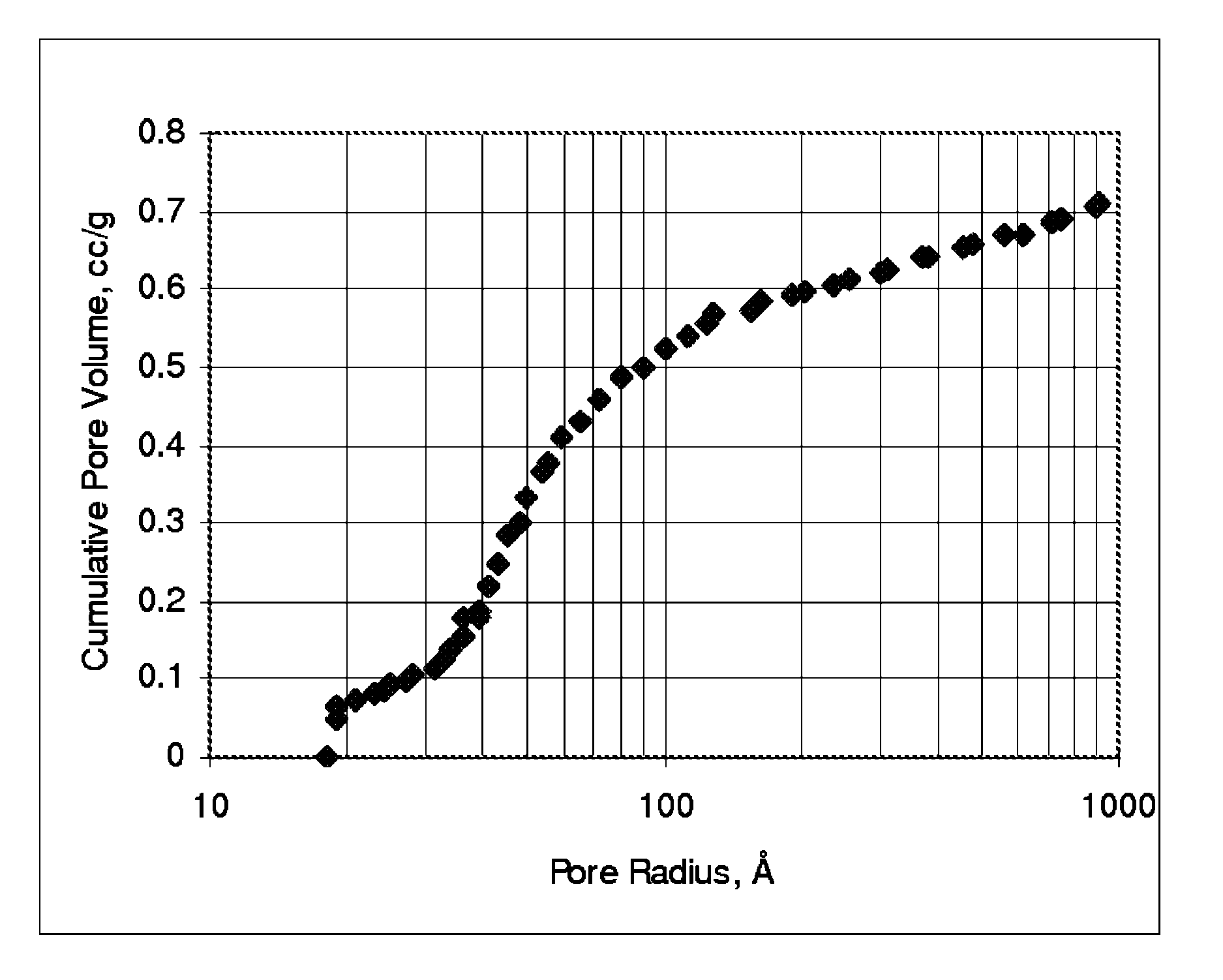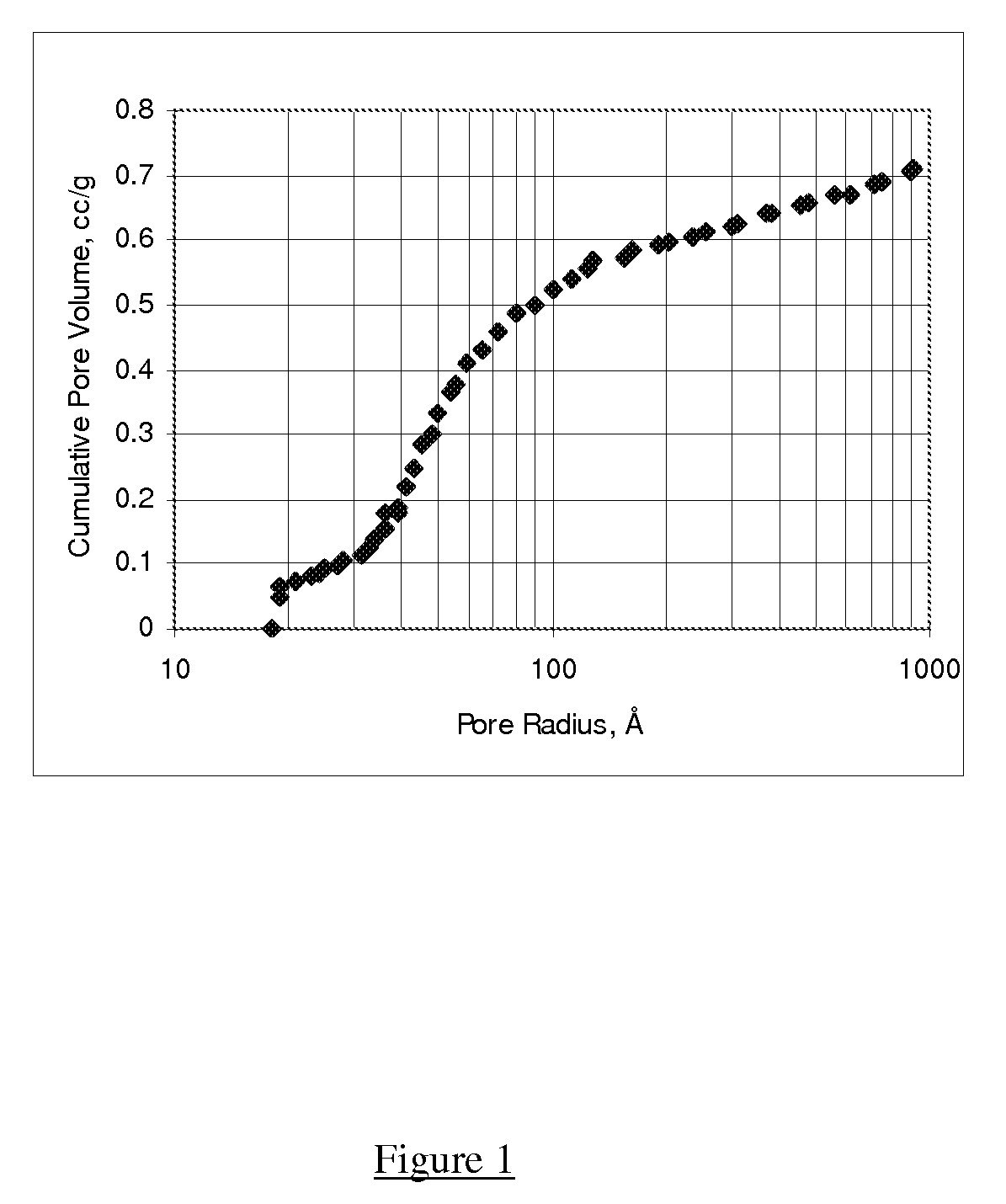Carbon supported catalyst for demetallation of heavy crude oil and residue
a technology of heavy crude oil and supported catalyst, which is applied in the direction of physical/chemical process catalyst, metal/metal-oxide/metal-hydroxide catalyst, organic compound/hydride/coordination complex catalyst, etc., can solve the problem of catalyst deactivation, loss of surface area, and environmental legislation that cannot be strictly controlled
- Summary
- Abstract
- Description
- Claims
- Application Information
AI Technical Summary
Benefits of technology
Problems solved by technology
Method used
Image
Examples
example 1
[0043]This particularly embodiment comprises at least of one hydrogenation promoter selected from the group consisting of transition metals of Groups IIIB, IVB, VB, VIB, VIIB, VIII, IB, IIB of the periodic table and preferably compounds of these metals La, Ce, Fe, Ti, Cr, Mo, W, Mn, Ni, Co. The most preferred hydrogenation compounds are oxides and / or sulfided of Mo, Co, Ni and mixtures of two or more of these compounds. In addition to these hydrogenation promoters, one or more compounds of phosphorus may also be present in the said embodiment. In this present invention the catalyst was prepared by co-impregnation method. In this method, the support material is placed in contact with an aqueous solution which contains all active metal or metal of Group VIB, Group VIII and / or phosphorus oxide, preferably as phosphoric acid. Then the said impregnated sample is passed to the drying and calcination stage so as to obtain the final catalyst in an oxidized form. In this case the catalyst co...
example 2
[0049]The catalyst of this particular example is prepared by similar procedure as described in example 1. This embodiment comprises at least one hydrogenation promoter selected from the group consisting of transition metals of Groups VIB and VIII of the periodic table and preferably compounds of these metals Mo, Fe, Ni, Co. The most preferred hydrogenation compounds are oxides and / or sulfided of Mo, Fe, Ni and mixtures of two or more of these compounds. The particular sample contains 8-16 wt % of MoO3, 2-6 wt % of NiO and 1-5 wt % of Fe2O3 on the catalyst weight basis. The catalytic activity of this particular case is carried out as similar procedure as described in example 1. The catalyst is also sulfided before actual activity is studied. The activities of this particular catalyst (TS-2) are given in Table 2.
examples 3-4
[0050]In this present case the catalysts are prepared by co-impregnation method. In this method the support material is placed in contact with an aqueous solution which contains all active metal or metal of Group VIB, Group VIII and / or phosphorus oxide, preferably as phosphoric acid. Then the said impregnated samples are passed to the drying and calcination stage so as to obtain the final catalyst in an oxidized form. The catalysts contain about 8 to 15 wt % of MoO3, 1-5 wt % of CoO and 0.5 to 1.5 wt % of P on the catalyst weight basis. The catalyst activity is studied with the same feedstock and reaction conditions as stated in example 1. The activities of these two catalysts (TS-3 and TS-4) are presented in Table 2.
PUM
| Property | Measurement | Unit |
|---|---|---|
| pore diameter | aaaaa | aaaaa |
| pore diameter | aaaaa | aaaaa |
| temperature | aaaaa | aaaaa |
Abstract
Description
Claims
Application Information
 Login to View More
Login to View More - R&D
- Intellectual Property
- Life Sciences
- Materials
- Tech Scout
- Unparalleled Data Quality
- Higher Quality Content
- 60% Fewer Hallucinations
Browse by: Latest US Patents, China's latest patents, Technical Efficacy Thesaurus, Application Domain, Technology Topic, Popular Technical Reports.
© 2025 PatSnap. All rights reserved.Legal|Privacy policy|Modern Slavery Act Transparency Statement|Sitemap|About US| Contact US: help@patsnap.com



